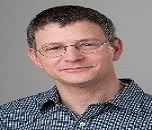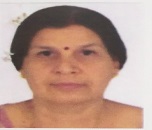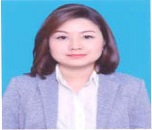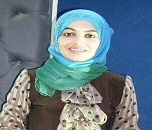Keynote Forum
Doron Lavee
Pareto Group Ltd, Israel
Keynote: Are economic tools preferable to direct regulatory measures in achieving environmental goals?
Time : 09:30 - 10:10 AM

July 22-23, 2019
Rome, Italy
Pareto Group Ltd, Israel
Time : 09:30 - 10:10 AM

University of Torino, Italy
Time : 11:10 - 11:50 AM

Gurukul Kangri University, India
Time :

Kasetsart University, Thailand
Time :

Busarin Chongcharoenyanon has background on food science and technology. She interested in food safety especially in microbiological and chemical aspect. The safety of food contact materials and food packaging is her main research of interest. She believes that, in order to improve the safety of the consumer, we can not only focus on the food quality but also the food packaging and the related materials.
Biobased plastic (BP) was reputed to the environmentally friendly properties. Many researches have focus on improving the physical and mechanical properties. However, as food contact materials and food packages, the migration test of BP should be conducted to ensure the safety of consumers. In this research, overall migration of 4 formulas of BP has been tested. Biodegradable polyester (polylactic acid: PLA) was formulated with thermoplastic starch (TPS) to form BP sheet samples. They were formulated at the ratio of PLA:TPS as 60:40 and 80:20 with additional of zeolite at 1% as a compatibilizer. The overall migration tests were conducted follow the Regulation EU 10/2011 on plastic materials and articles intended to come into contact with food. The chemical migrants from BP samples were extracted in food simulants. Four food simulants which were represented each kind of foods were 10% ethanol (Simulant A) for aqueous foods, 3% acetic acid (Simulant B) for acidic foods, 20% ethanol (Simulant C) for alcoholic foods, 50% ethanol (Simulant D) for dairy fatty foods. The extractions were conducted at the specific conditions, range from 2 h to 10 days at 10 to 70 °C which resemble to the intended usage condition. After the extraction, the BP samples were tested for the mechanical properties compared with the samples before the extraction. The simulants were proceeded to determine the amount of migrants then compare with the overall migration limit (10 mg/dm2). The overall migration results showed that the BP samples still have some limitations in application under severe condition of overall migration testing. The mechanical test show significantly reduction of properties after contact with food simulants. Further investigations are needed to clarify the proper condition for commercial usage such as the sensory evaluation to clarify the consumer acceptability level of the reduce mechanical properties.
University of Sfax, Tunisia

Lamia Ben Amor has her expertise in evaluation and passion in improving the environment and during of sustainable development. Her open and contextual evaluation model based on responsive constructivists creates new pathways for improving the sector of recycling. She has built this model after years of experience in research, evaluation, visiting environmental institutions and exploring several places of reusing and recycling waste. The foundation is based on fourth generation evaluation (Kinamman and Fullerton,1996) which is a methodology that utilizes the previous generations of evaluation: measurement, description and judgment. It allows for value-pluralism. This approach is responsive to all stakeholders and has a different way of focusing.
This research paper aims to examine the influence of financial (Price of Waste Disposal), institutional (Collection of waste, Drop- off recycling centers, Ordinance) and demographic determinants (Population Density) on recycling rate of plastic as a domestic waste on a Panel of 24 governorates from Tunisia Country using a static model estimated by the Ordinary Least Squares (OLS) over the 2001- 2018 period. We also implement this empirical model for 24 governorates from only country selected on the base data availability. They include Ariana, Beja, Ben Arous, Bizerte, Gabes, Gafsa, Jendouba, Kairouan, Kasserine, Kebili, Kef, Mahdia, Manouba, Medenine, Monastir, Nabeul, Sfax, Sidi-Bouzid, Siliana, Sousse, Tataouine, Tozeur, Tunis, and Zaghouan. It is concluded from empirical findings that all exogenous variables expect population density have significant effect on recycling rate. Consequently, this is a great improvement in the Tunisia environmental system of waste management.
Boreskov Institute of Catalysis SB RAS, Russia

Nadezhda V Vernikovskaya is senior researcher at Boreskov Institute of Catalysis SB RAS (BIC SB RAS), Novosibirsk, Russia, Associate Professor, Faculty of Natural Sciences, Novosibirsk State University (NSU) and Associate Professor, Aircraft Faculty, Novosibirsk State Technical University (NSTU). She has completed her PhD in 1996. She has written approximately 100 peer reviewed journal articles, book chapters and conference papers. Most of her research has focused on modeling and simulation of such heterogeneous catalytic reactors as tubular reactor, fluidized bed reactor, structured catalytic reactor and so on; soot particulates abatement in diesel engine exhaust by their trapping in filters; filtration of the catalysts suspension in hydrogenated oil through the woven cloth.
In the modern world, there is always a huge amount of solid waste caused by human life and harmful to nature and people. Solid waste may be small particles in a liquid or gas mixture. Filtration processes can be used to capture these particles from mixture in order to reuse them or simply to reduce their content in the mixture being cleaned. Mathematical modeling of filtering processes can help reduce experimental efforts during filtration processes development. The purpose of the study was to develop an Equation-Oriented approach to modeling filtration processes, the aim of which is to reuse trapped particles and / or reduce the content of particles in the mixture being cleaned.
The approach is to create a model of the necessary and sufficient degree of complexity, to develop an effective algorithm for solving model equations and create a program code. The model takes into account the main necessary features of the system: unsteady-state behavior, geterogeneity of the system, convective mass transfer of particles in mixture along the filter depth, penetration of particles through the filter, accumulation of particles inside the filter pores, deposition of coarse particles and particles due to inertial collision on the outer filter surface, particles size distribution. A sufficient degree of complexity is the use of one-dimensional models, since the transfer of particles occurs only in one direction.
The algorithm is based on the three existing methods and takes advantages of each of them: the method of lines, the running scheme, and the second order Rosenbrock method with stepsize adjustment algorithm. The approach has been applied to the modeling of such filtration processes as soot particulates abatement in diesel engine exhaust and filtration of the catalysts suspension in hydrogenated oil through the woven cloth. Verification of the mathematical model and numerical method is done by means of comparison of the numerical results with the experimental data. Using this approach to modeling various filtering processes it is possible to predict the performance of filters and to select the filtering material with the proper specifications for efficient reducing particle content in the mixture being cleaned. The captured solids can be then reused if necessary. This work was conducted within the framework of budget project No. 0303-2016-0017 for Boreskov Institute of Catalysis.
University of São Paulo, Brazil

Sandra Regina Scagliusi: Great experience with elastomers. Upgraded in recovering of rubbers, in general, specially dealing with butyl and halo-butyl rubbers (chlorine and bromine). She is deeply involved with irradiation, recycling, de- vulcanization, micro-wave. She developed a new process of rubbers recovering via radiation and mechanical shear. She has been dedicating in research toward environmental area in recycling of solid materials and elastomers. Proved experience in research and quality control laboratories.
Butyl rubber has a comprehensive use in sealing systems, especially in tires inner tubes, due to their low permeability to gases. So, it is required that butyl rubber compounds show a better performance, more and more. Butyl rubber is provided with excellent mechanical properties and oxidation resistance. Besides showing these properties, radiation exposures impart modifications in physical-chemical and morphological properties on butyl rubber materials. When exposed to gamma-radiation, rubbers suffer changes in their mechanical and physical properties, caused by material degradation. The major radiation effect in butyl rubbers is chain- scission; besides, ageing promotes too the same effect with further build- up of free radicals. This work aims to the study of gamma-radiation in physical-chemical properties of butyl rubber subjected to thermal ageing. Doses used herein were: 25 kGy, 50 kGy, 100 kGy, 150 kGy and 200KGy. Samples were evaluated before and after ageing according to traditional essays, such as: hardness, tensile strength and elongation at break. From accomplished assessments, it is possible to affirm that at doses higher than 50 kGy it was observed a sharp decreasing in butyl rubber physical-chemical properties, before and after exposure to ageing.